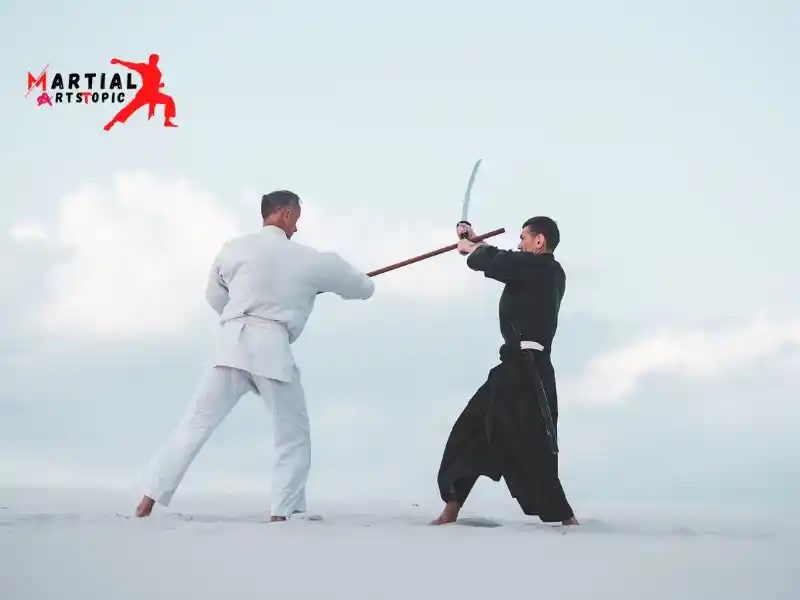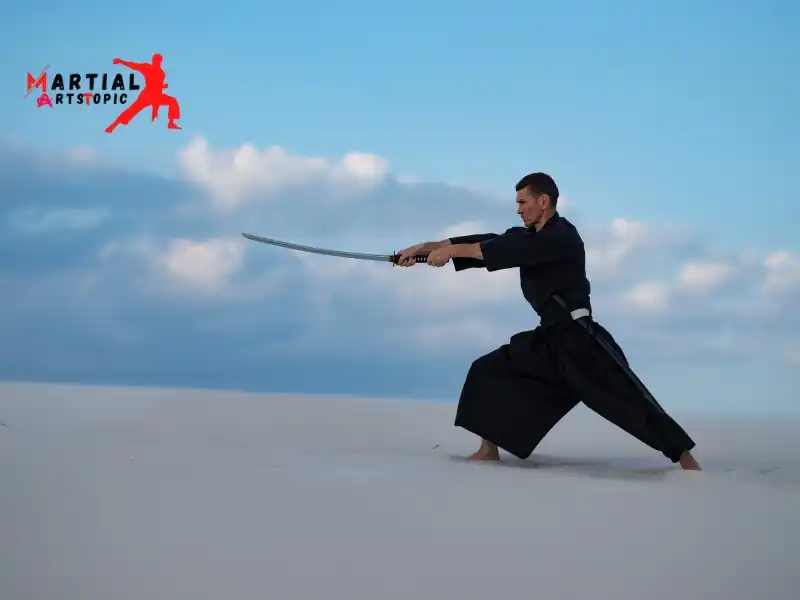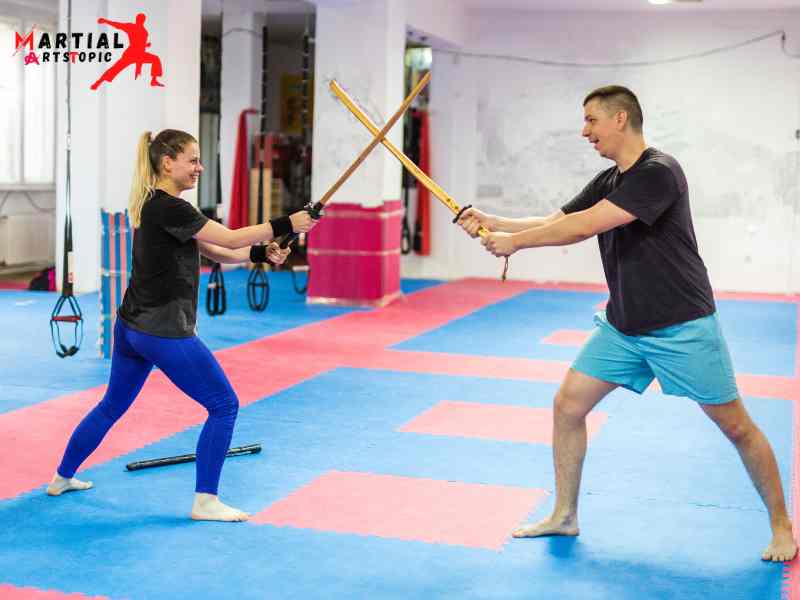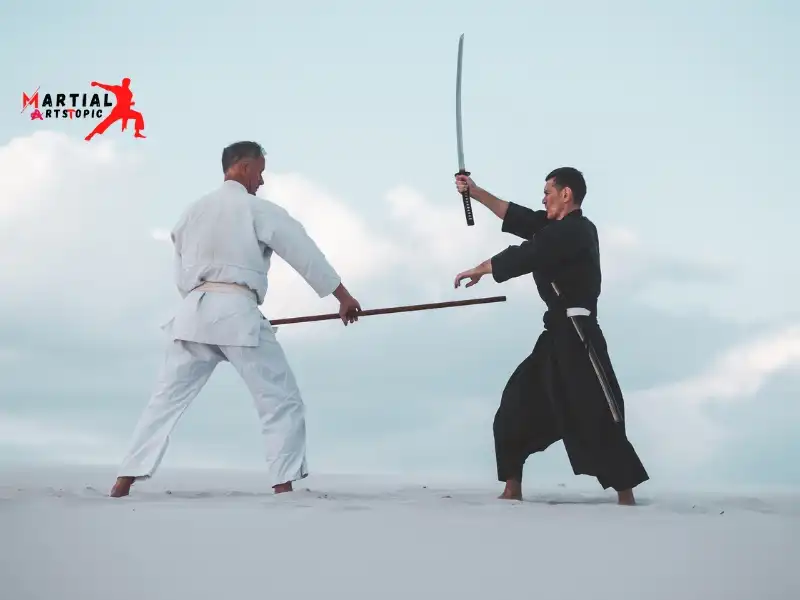
Bojutsu: The Ancient Art of Staff Combat
Bojutsu, also known as the ancient art of staff combat, is a traditional Japanese martial art that focuses on the effective and skillful use of a staff weapon. Bojutsu techniques involve striking, thrusting, and blocking movements, making it a comprehensive and versatile form of martial arts practice. The practice of Bojutsu not only enhances physical strength, agility, and coordination, but also cultivates mental discipline and focus. Through dedicated training and study, practitioners of Bojutsu develop a deep understanding of timing, distance, and positioning, enabling them to wield the staff with grace and precision. This ancient martial art continues to captivate enthusiasts around the world, offering a unique blend of physical and mental development.
What is Bojutsu?
What is Bojutsu? Bojutsu, also known as “staff techniques,” is a traditional Japanese martial art that focuses on the skillful and dynamic use of a staff or bo. The practice of Bojutsu involves a combination of striking, blocking, thrusting, and sweeping techniques, making it an effective and versatile form of self-defense. This martial art emphasizes not only physical techniques but also mental discipline, focus, and agility. Bojutsu practitioners learn to wield the staff with precision and fluidity, honing their coordination and timing. With its roots in ancient Japanese warrior traditions, Bojutsu remains a respected and revered martial art that continues to be practiced and studied around the world.
Definition and Origins

Bojutsu can be defined as the martial art that specifically revolves around the use of the bō, a long staff typically made of wood, bamboo, or other durable materials. The bō is approximately 6 feet in length and is wielded with precision and skill in various striking, blocking, and grappling techniques.
The origins of Bojutsu can be traced back to ancient Japan, where warriors and samurai developed and refined as a combat and self-defense system it. The art of Bojutsu was not only utilized on the battlefield but also served as a means of personal protection for individuals in everyday life.
Historical Development
The historical development of Bojutsu is closely intertwined with the evolution of martial arts in Japan. It is believed that the use of the bō as a weapon dates back to prehistoric times when it was used by early Japanese warriors and hunters for both combat and hunting purposes.
Throughout the centuries, Bojutsu underwent systematic development and codification, eventually becoming an integral part of traditional Japanese martial arts. It was further refined during the feudal era, as samurai warriors honed their skills in wielding the bō as part of their comprehensive martial training.
Cultural Significance
Bojutsu holds significant cultural importance within the context of Japanese martial arts. It embodies the principles of discipline, focus, and respect, which are fundamental to the traditional values of martial arts. The practice of Bojutsu not only emphasizes physical techniques but also fosters spiritual growth, promoting harmony and balance within oneself and with others.
Today, Bojutsu continues to be practiced and celebrated as a living tradition, both in Japan and across the globe. Its cultural significance extends beyond the realm of martial arts, influencing various aspects of Japanese culture, including art, literature, and philosophy.
Fundamentals of Bojutsu Techniques
What is Bojutsu? Bojutsu, the Japanese martial art of staff fighting, encompasses a wide range of techniques and principles that form the foundation of this ancient discipline. The fundamentals of Bojutsu techniques involve mastering the use of the bo (staff) as both a defensive and offensive weapon, focusing on striking, blocking, and footwork. Practitioners of Bojutsu learn to wield the staff with precision and agility, honing their skills in various stances and strategies.
Stances and Footwork
At the core of Bojutsu lie the stances and footwork that form the foundation of this art. The proper stance is crucial for maintaining balance, stability, and agility during combat. From the fundamental “Shizen no Kamae” (natural posture) to the dynamic “Jumonji no Kamae” (crossed posture), each stance serves a specific purpose, allowing practitioners to adapt to diverse combat scenarios. Understanding and mastering these stances is vital for anyone seeking proficiency in Bojutsu.
Additionally, footwork plays a pivotal role in Bojutsu, enabling practitioners to maneuver effectively, evade attacks, and generate power in their strikes. Whether it’s the subtle shuffling of the feet or swift pivots, the art of Bojutsu demands precision and control over one’s movements. By honing your footwork, you can elevate your performance and responsiveness in combat situations.
Grips and Handling of the Staff
The staff, or “bo,” is the quintessential weapon in Bojutsu, and mastering the grips and handling techniques is paramount. Whether you’re adopting the “Honte Mochi” (basic grip) or the more advanced “Katte Mochi” (reverse grip), understanding the nuances of each grip is essential for wielding the staff with precision and power. Furthermore, learning how to transition seamlessly between grips and maintain a firm hold on the staff is a skill that distinguishes adept Bojutsu practitioners.
Basic Strikes and Blocks
Bojutsu encompasses a diverse array of striking techniques, each with its own unique application and purpose. From the fundamental “Jodan Uchi” (upper strike) to the swift “Kesa Giri” (diagonal cut), mastering these basic strikes is essential for developing a well-rounded skill set in Bojutsu. Additionally, proficiency in blocking techniques such as “Gedan Uke” (lower block) and “Chudan Uke” (middle block) is crucial for defense and counterattacking in combat scenarios.
Defensive Maneuvers
In the realm of Bojutsu, defensive maneuvers are integral for protecting oneself while simultaneously creating openings for counterattacks. Techniques such as “Tai Sabaki” (body evasion) and “Nagashi” (deflecting strikes) are essential components of a comprehensive defensive repertoire. By mastering these maneuvers, practitioners can effectively neutralize incoming attacks and swiftly transition to offensive tactics.
Advanced Bojutsu Techniques
The art of Bojutsu with advanced techniques that take your skills to the next level. Bojutsu, also known as staff fighting, encompasses a range of dynamic movements and strategies that have been honed over centuries. In this guide, you’ll delve into advanced Bojutsu techniques that focus on enhancing agility, precision, and power in wielding the traditional staff weapon. From intricate footwork to strategic strikes and defensive maneuvers, mastering these advanced Bojutsu techniques will elevate your expertise in this revered martial art.
Kiai: The Power of Vocalization
In advanced bojutsu, practitioners harness the power of kiai, a vocalization technique that enhances focus and amplifies the impact of strikes. By emitting a powerful shout at the moment of impact, practitioners channel their energy and intimidate opponents, gaining a psychological advantage in combat.
Tsuki Waza: Mastering Thrusting Techniques
Tsuki waza, or thrusting techniques, form a crucial component of advanced bojutsu. Practitioners learn to execute swift and precise thrusts, targeting vulnerable points on the opponent’s body with unerring accuracy. Mastery of tsuki waza demands unwavering control and impeccable timing.
Sotai Waza: Dynamic Partner Practices
Sotai waza, the practice of dynamic partner drills, elevates the training experience in advanced bojutsu. Through coordinated movements with a partner, practitioners refine their reflexes, adaptability, and spatial awareness. This form of training fosters a deeper understanding of timing and distance, essential elements in actual combat situations.
Bojutsu Kata: Fluid and Expressive Form
Advanced bojutsu practitioners immerse themselves in intricate bojutsu kata, or choreographed forms. These sequences of movements blend grace, power, and precision, allowing practitioners to showcase their mastery of the staff with fluid and expressive maneuvers. Bojutsu kata serves as a testament to the seamless fusion of technique and artistry in this martial discipline.
Renzoku Waza: Unleashing Continuous Attacks
Renzoku waza, the art of executing continuous attacks, epitomizes the dynamic nature of advanced bojutsu. Practitioners learn to seamlessly transition from one strike to the next, maintaining relentless pressure on their opponents. This technique demands exceptional stamina, coordination, and mental fortitude.
Benefits of Mastering Advanced Bojutsu Techniques
- Enhanced Focus and Mental Clarity: The intricate nature of advanced bojutsu techniques sharpens the practitioner’s focus and cultivates mental clarity, attributes that extend beyond the training hall into everyday life.
- Heightened Physical Coordination: By honing advanced bojutsu techniques, practitioners develop heightened physical coordination, reflexes, and agility, enhancing their overall physical prowess.
- Inner Discipline and Resilience: The pursuit of mastery in advanced bojutsu instills a deep sense of discipline and resilience, fostering a strong mind-body connection and fortitude in the face of challenges.
Complex Striking Patterns
Advanced bojutsu involves mastering complex striking patterns that go beyond the basic techniques. By incorporating intricate footwork, fluid body movements, and precise strikes, practitioners can enhance their ability to effectively engage with their opponents. These advanced striking patterns not only require physical dexterity but also mental acuity, as practitioners must anticipate their opponent’s movements and adapt their techniques accordingly.
Disarming Techniques
In the realm of advanced bojutsu, disarming techniques play a pivotal role in neutralizing an opponent’s weapon. Whether facing an armed adversary or seeking to gain the upper hand in combat, mastering the art of disarming is essential. From swift deflections to strategic leverage, advanced practitioners of bojutsu hone their skills in disarming, enabling them to effectively and efficiently disarm their opponents while maintaining control of the situation.
Joint Locks and Throws
Exploring joint locks and throws adds a dynamic dimension to advanced bojutsu techniques. By leveraging the principles of biomechanics and leverage, practitioners can effectively immobilize opponents and gain the upper hand in combat. Advanced joint locks and throws require precision, timing, and a deep understanding of human anatomy, allowing practitioners to subdue opponents with minimal effort while maximizing control and effectiveness.
Training Methods in Bojutsu

Bojutsu, the ancient Japanese martial art of stick fighting, encompasses various training methods designed to hone practitioners’ skills in using the bo staff. These methods include kata (forms), kihon (basic techniques), and partner drills, all of which are essential for developing proper technique, strength, and agility in Bojutsu. Additionally, sparring, known as kumite, allows practitioners to apply their skills in a dynamic, real-life setting. By incorporating these diverse training methods, Bojutsu enthusiasts can improve their proficiency in wielding the bo staff, ultimately advancing their mastery of this traditional martial art.
- Master the Basics: Like any martial art, Bojutsu requires a firm foundation. Spend ample time mastering the basic stances, footwork, and grips. Understanding the proper way to hold and maneuver the staff is crucial for building a solid skill set.
- Focus on Body Mechanics: Bojutsu relies heavily on efficient body mechanics. Pay close attention to your posture, balance, and the coordination of your movements. Developing proper body mechanics will not only enhance your performance but also reduce the risk of injury.
- Practice Kata: Kata, or pre-arranged forms, are an integral part of Bojutsu training. Through consistent practice of kata, you can refine your techniques, improve your timing, and gain a deeper understanding of the art. Repetition is key to mastering the intricacies of each kata.
- Strengthen Your Grip and Forearms: A firm grip and forearms are essential for wielding the staff effectively. Incorporate grip-strengthening exercises into your training regimen. This can include using grip trainers, performing wrist curls, or utilizing specific Bojutsu training equipment.
- Build Endurance and Flexibility: Bojutsu demands physical endurance and flexibility. Engage in regular cardiovascular exercises to improve your stamina. Additionally, incorporate stretching routines to enhance your flexibility, which is crucial for executing various techniques with precision.
- Spar with Partners: Training with a partner is invaluable in Bojutsu. Engage in controlled sparring sessions to apply your techniques in a dynamic and interactive setting. This will help you refine your timing, distance management, and adaptability.
- Study the Philosophy: Bojutsu is not merely about physical techniques; it also encompasses a rich philosophical foundation. Take the time to study the principles and philosophies underlying Bojutsu. Understanding the spiritual aspects of the art will deepen your practice and elevate your overall proficiency.
- Seek Guidance from a Qualified Instructor: While self-study has its merits, seeking guidance from a qualified Bojutsu instructor is crucial for proper skill development. An experienced instructor can provide personalized feedback, correct any technical errors, and guide you through advanced training methods.
Bojutsu Weapons and Equipment
Bojutsu, also known as staff fighting, is a traditional Japanese martial art that focuses on using a staff or bo (a long staff weapon) for self-defense and combat. Bojutsu practitioners utilize various types of staffs, such as rokushakubo (a six-foot staff) or jo (a shorter staff), to learn striking, blocking, and grappling techniques. Training in Bojutsu also involves the use of protective equipment like padded gloves and headgear to ensure safety during practice sessions and sparring matches. Additionally, students often study the maintenance and care of their bo staffs to ensure their longevity and effectiveness in training and combat. If you’re interested in exploring the art of Bojutsu, acquiring the right weapons and equipment is essential for your practice and development in this ancient martial art.
Types of Bo (Staff)
Bojutsu, also known as the art of the staff, encompasses a wide range of techniques and practices involving the use of a staff or “Bo.” The Bo staff is a versatile weapon that can be used for striking, blocking, and grappling. There are several types of Bo staffs used in Bojutsu, each with its own unique characteristics and purposes.
- Rokushaku Bo: The Rokushaku Bo, also known as the “six-foot staff,” is the standard Bo staff used in traditional Bojutsu. It is approximately six feet in length and is the most commonly used type of Bo staff in martial arts training.
- Jo: The Jo is a shorter staff, usually around four feet in length. It is known for its agility and speed, making it a popular choice for practitioners who prefer a more maneuverable weapon.
- Hanbo: The Hanbo is a shorter staff, typically around three feet in length. It is favored for its compact size and ease of concealment, making it a formidable weapon in close-quarter combat.
Protective Gear for Training
When practicing Bojutsu, it’s essential to prioritize safety by using the appropriate protective gear. The following are essential pieces of protective equipment commonly used in Bojutsu training:
- Tare (groin protector): This is a crucial piece of protective gear for male practitioners, providing vital protection during training and sparring sessions.
- Men (headgear): Headgear is essential for protecting the head and face from strikes and affects during training, ensuring the safety of the practitioner.
- Kote (gauntlets): Kote are protective gloves or gauntlets designed to shield the hands and wrists from injuries resulting from weapon strikes and blocks.
Traditional vs Modern Equipment
In Bojutsu, there is a rich tradition of using traditional equipment that has been passed down through generations. However, modern advancements have also led to the development of specialized equipment designed to enhance training and performance. Here’s a comparison of traditional and modern equipment used in Bojutsu:
Traditional Equipment
- Wooden Bo staffs crafted from oak, hickory, or other sturdy woods
- Handcrafted protective gear made from leather, bamboo, and natural materials
Modern Equipment:
- High-quality synthetic Bo staffs designed for durability and consistency
- Advanced protective gear featuring affected-absorbing materials and ergonomic designs for enhanced comfort and performance
Benefits of Practicing Bojutsu

Practicing Bojutsu, also known as the art of the Japanese staff, offers an array of physical, mental, and self-defense benefits. Bojutsu training can improve overall physical fitness, coordination, and flexibility. Additionally, it promotes mental focus, discipline, and stress relief. From a self-defense perspective, mastering Bojutsu techniques can enhance one’s ability to defend against armed and unarmed attackers. The practice of Bojutsu also instills a deep sense of tradition and cultural appreciation. Overall, engaging in Bojutsu training provides a holistic approach to personal development and well-being.
- Physical Fitness: Bojutsu is an excellent full-body workout that engages various muscle groups and improves overall strength, flexibility, and cardiovascular endurance. The dynamic movements involved in Bojutsu training help to enhance agility, coordination, and balance. Whether you’re striking, blocking, or performing katas (pre-arranged forms), every aspect of Bojutsu contributes to a comprehensive physical fitness regimen.
- Mental Discipline: The practice of Bojutsu requires a high degree of focus, concentration, and mental discipline. Through repetitive training and precise execution of techniques, practitioners develop a heightened sense of awareness and mindfulness. The meditative aspect of Bojutsu promotes mental clarity, stress reduction, and the ability to remain calm under pressure—a valuable skill in both martial arts and everyday life.
- Self-Defense Skills: While Bojutsu is rooted in traditional Japanese martial arts, its practical applications extend to modern self-defense scenarios. By learning how to wield a staff effectively, practitioners can develop valuable self-defense skills and strategies. The techniques and principles of Bojutsu can be adapted for real-world situations, empowering individuals to protect themselves and others if the need arises.
- Cultivation of Character: The principles of respect, humility, and discipline are deeply ingrained in the practice of Bojutsu. As practitioners progress in their training, they not only improve their physical abilities but also cultivate a strong sense of character and integrity. The traditional values upheld in Bojutsu contribute to personal growth, self-improvement, and the development of a strong moral compass.
- Stress Relief and Mental Well-being: Engaging in Bojutsu training provides an outlet for stress relief and a means of promoting mental well-being. The physical activity, focused concentration, and sense of accomplishment that comes with mastering techniques can have a positive impact on mental health. Many practitioners find that the meditative nature of Bojutsu helps them achieve a sense of inner peace and balance in their lives.
Conclusion
What is Bojutsu? Bojutsu is a traditional Japanese martial art that focuses on the skillful and dynamic use of the bo staff as a weapon for self-defense and combat. With its roots in ancient warfare, Bojutsu has developed into a disciplined practice that encompasses striking, blocking, and grappling techniques. Practitioners of Bojutsu not only develop physical prowess but also cultivate mental focus, discipline, and respect for the art form. The study of Bojutsu offers practitioners a path to self-improvement, personal growth, and a deeper understanding of traditional Japanese martial arts. Whether pursued for self-defense, physical fitness, or as a means of personal development, Bojutsu remains a valuable and enriching martial art with a rich history and deep cultural significance.
